Why buy landscape art?
Buying landscape art is personal. So what should motivate you?
First, let’s look at some of the tangible benefits of landscape art.
Benefits of landscape art
- Timeless beauty: Landscape is timeless subject matter. While pop art comes and goes, fads change in the fashion and art worlds, and your artistic tastes may evolve, a quality landscape painting will be as beautiful in 50 years as it is today.
- Live with nature: If you live in a city, connecting with nature can be tough. But if you take a moment to sit in front of a landscape painting, you’ll be transported to a place where the sun shines brighter, the mountains rise higher, and the air smells cleaner. It’s like having Mother Nature as a guest in your home.
- A calming influence: You know how they say music can soothe even the savage beast? Art and music are more similar than you realize. Having a majestic Teton painting hanging on your wall, or a quiet winter scene, will give you a sense of tranquility and bring more peace to your home.
- Memory compactors: I’ll talk about this more later on in this post, but getting a landscape of a specific place that means something to you will instantly reignite positive emotions, remind you of treasured stories, and basically keep the best parts of life with you every time you view your art. It’s literally like compacting memories into a single canvas, and the precise reason why I recommend commissioning landscape art if you’ve ever connected to a real-life landscape.
The right reasons to buy landscape art
If any of those benefits sound like something you could use in your life, buying landscape art is probably a good idea. But the reasons I hear for people buying art vary widely.
I’ve sold landscape art to people who buy art as an investment. And it’s fun to place that art.
I’ve sold art to people who want to adorn their home with the views they don’t have. And it’s fun to help them hang that art.
But one reason for buying landscape art stands out to me above all others: Connection.
See, I once sold a painting to a woman who had to sell her prize dirt bike to buy a Jim Wilcox painting she loved.
I’ll come back to that later on, but first, let’s explore a few reasons I hear that people buy art and honestly examine if it passes muster.
Should I buy art as an investment?
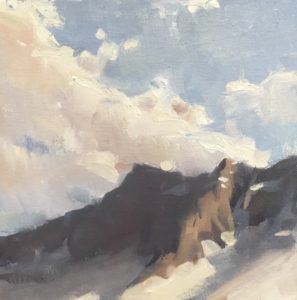
Can art be a good investment? Absolutely.
Over at Jim Wilcox’s gallery, Wilcox Gallery, we represent an 18-year-old artist named Kyle Ma.
My brother Eric discovered Kyle when he was 14. Eric thought he was just being nice when he asked to see Kyle’s work once the young artist started talking about being a painter.
Turns out that was one heck of a moment to be nice. We sold hundreds of paintings for Kyle Ma before he graduated high school and we still have a hard time keeping his work in stock.
And you know what? I have no problem telling people that his art makes a great investment.
Because I know he has an upward career trajectory because of his hard work, his story, and his insane ability to paint at a young age.
But most art investments are long-term investments. It’s more like riding the stock market than expecting a windfall instant turnaround.
Some people buy art and turn around to sell it at an auction, only to be disappointed when it sells for less than retail. I’m being brutally honest here.
That’s the art market equivalent of buying high and selling low. Not only did they pay retail pricing for the art, they took it to an outlet where no price is guaranteed, many people don’t know enough to know what they’re passing up, and most buyers are looking for a bargain.
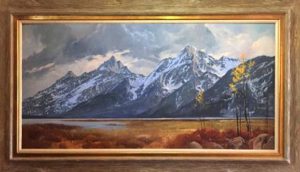
Contrast that with the people who bought Jim Wilcox paintings back in the 1960s and 1970s when he sometimes sold plein air pieces at 3 for $100(!!!), and you see the difference. Those same paintings are today worth thousands due to the passing of time, the increasing awards and recognition Jim has received, and the augmenting effect of higher-quality work over time.
All that said, if you’re buying art strictly as an investment and you don’t fall into some of the following categories, I don’t really recommend art as an investment.
Unless you have the connections to sell your own art collection or a desire to ride out a potential gamble, there are other investments that will probably make more sense.
Otherwise the game is tilted so the artists, galleries, and auction houses always win.
Again – just being honest here.
Should I buy art as a gift?
Short answer? Yes.
Long answer? It’s complicated.
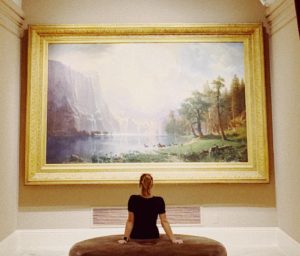 Art is personal, as I mentioned before. Something that strikes a deep emotional chord in one person can leave another person feeling flat.
Art is personal, as I mentioned before. Something that strikes a deep emotional chord in one person can leave another person feeling flat.
Even between husband and wife. Trust me – I’ve lost a lot of art sales to spouses who didn’t share taste in art.
So what if you buy a landscape painting your significant other hasn’t seen and perhaps doesn’t connect with on the same level you do?
You may have just thrown away thousands of dollars. This approach might not be worth the relationship or marital difficulties.
But say you and your spouse are walking through a gallery and see the perfect landscape painting together. You both love it, but you’re only browsing for art, so you don’t commit.
Or maybe the salesperson is too busy to answer questions at the moment or there’s some other reason that impedes you from jumping on it on the spot.
Go back on the sly and get that artwork. That’s the right way to buy art as a gift.
I’ve actually seen husbands take this approach and the wife calls back to buy the painting later only to find somebody swept it out from under them.
The wife isn’t happy. Until the reveal, at least…
Then I get ecstatic calls or visits telling me how well it went over. (I’ve also seen the reverse where the wife bought a piece out from under the husband without telling him. Worked then, too.)
Should I buy art to commemorate an occasion?
An emphatic yes!
This is one of my favorite reasons to sell art.
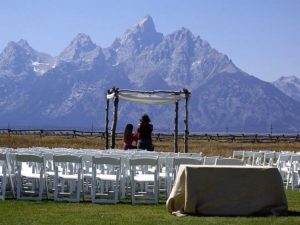
In Jackson Hole, a lot of my clients come on once-in-a-lifetime trips to climb the Tetons, get married in a National Park, see wildlife in Yellowstone, or otherwise spend time with people they love in places they love.
And they often buy landscape art like Jim Wilcox paintings to commemorate what they did.
Maybe they find a painting of a backcountry lake they hiked to. Perhaps they get a high-mountain scene that shows a canyon they climbed in. Or sometimes they just buy a piece of art to remember their trip as a souvenir.
I like this method of art purchase; it creates an emotional connection to your art. My most prized possession is a Jim Wilcox painting called “Priceless Memories at Delta Lake.” (See below for image)

Dad let me title it.
But the painting depicts a glacial lake in the Tetons I took my father to the first time when he was more than 70 years old.
Yep, I took my father, known as “the painter of the Tetons,” to a place he’d never been in the Tetons during more than 50 years of living in Jackson Hole.
And did I mention it’s my favorite place?
And we saw a sow black bear with three cubs?
Plus we even waited out an afternoon rainstorm with my wife, Dad, and I huddled under one jacket for warmth?
Priceless.
Not only do I think, “How beautiful” when I look at my painting, I also think about that experience with my Dad. And that’s awesome.
Commemorating an occasion with art connects a story to your art, giving you more reasons to engage than it just being “a pretty picture.”
Should I buy art to decorate and beautify my home?
Definitely.
If you have the means to do so, decorating with art is a fantastic way to bring life to your home.
Ideally, you have more than this reason for buying art.
I’ve helped sell a lot of art to people who use interior designers to furnish their art. And that’s fine, especially if you’re on the same page artistically as your interior designer.
That said, sharing a wavelength with an interior designer can be rare.
We recently lost a sale to a man whose fine art choice was vetoed by an interior designer.
He was so pumped on his new painting until, “Bam!” the designer deflated him only for the reason that it didn’t match colors.
I like selling for decoration, but trust me, even this should usually be accompanied by some of the other reasons I’ve mentioned here.
But landscape art does make great decoration. I spend a lot of time sitting in my home and looking out at the lovely views of the Tetons that I don’t have at my house.
Decorating with art allows me to transport to and connect with my favorite places on the planet. It allows me to take myself out of my day, slow down, and breathe in the mountain air without leaving my home.
And that’s a reason worth buying art right there.
Should I buy art because I love it?
Uh-huh! Yep! Don’t hesitate!
I sometimes have trouble remembering which collector bought which piece of art.
But remember the woman I mentioned earlier who sold her dirt bike for a landscape painting?
I will always remember that 12” x 16” painting of a lily pond in Grand Teton National Park.
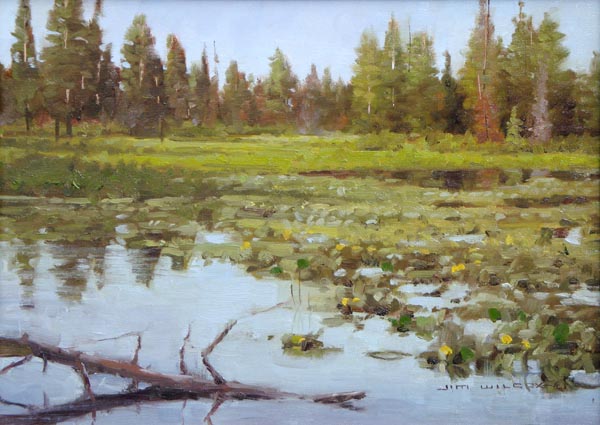
And more importantly, I’ll remember the tears of joy she cried as she paid her down payment to reserve it until she could sell her most prized possession to that point.
It meant that much to her.
Her connection to that one painting became a driving need to have it. To live with it. To love it.
That’s something you never forget as a salesperson. Giving someone art that connects to them so deeply they’re willing to sacrifice for it.
And that’s when all the other reasons for buying art just don’t matter.
My brother, Jeff, once bought a painting by a Chinese artist named Zhang Wen Xin. As a business student, my brother learned that if you can make a profit on a turnaround sale, you take it.
Well, Jeff paid several thousand dollars for a painting by this artist he loved as an “investment.” But since then, he’s gotten many offers from collectors who want to buy that painting from him for prices astronomically higher than what he paid for it.
And he. Can’t. Part with it.
If you buy art because you love it, you’ll never second-guess the money you paid. It will always be a win.
In the gallery business, I don’t hear from many people who have buyers’ remorse when they buy landscape art, or any other art we carry.
Instead, I hear countless stories about “the one that got away.”
That’s not a fun place to be. If you find art you love and connect with on an emotional level, find a way to buy it.
Period.
November 19, 2018 @ 10:26 pm
INSPIRATION! Artists collect artists they admire and I am very proud to own two of Jim’s painting as well as his book. While landscape is not my primary focus, the animals I paint are IN landscapes and thus the landscape is important. I often refer to Jim’s work to see how he solved various problems similar to those I might be working on. I tell other artists that every penny they spend on art books and art by artists they admire is a penny spent on their education.
November 27, 2018 @ 10:21 pm
Artists definitely look at paintings differently than collectors. Artists get up close and personal, and collectors tend to keep their distance and get the overall feeling. Artists like to see how the puzzle came together, while collectors like to see the puzzle as a whole. It’s fun to pinpoint the artists when they come in just by how they look at art.
November 19, 2018 @ 11:05 pm
Hi Jim and family,
Being art collectors for over 40 years, we purchased our art for Investment, to beautify our home, and most importantly, because we love the work. Add to that a new one, to study the techniques, now that I am an emerging artist and appreciate more that “just a pretty picture”. But then, we subconsciously knew the art was quality. I started painting when I was 5 yrs old and at 10 began to study the masters. Loved Degas and Monet. But as all young kids do, did not pursue art until I retired. Of the 35 plus artists that we collected, the majority became Cowboy Artists of America, or Prestigious Award winners.
November 27, 2018 @ 10:19 pm
You do have a great track record. All great reasons for collecting art!